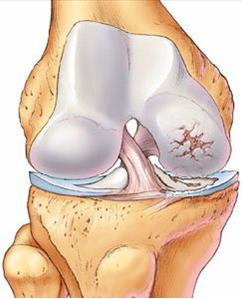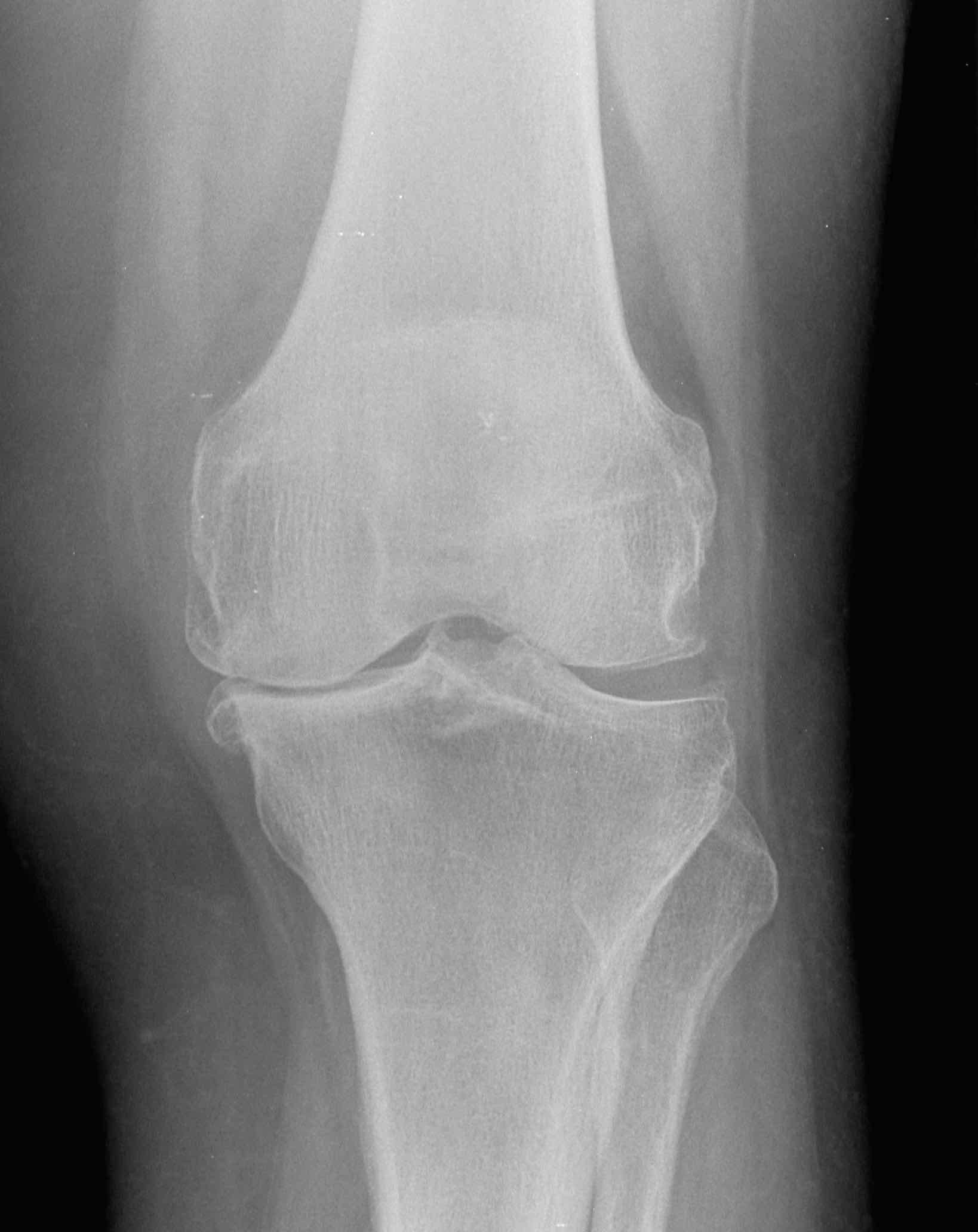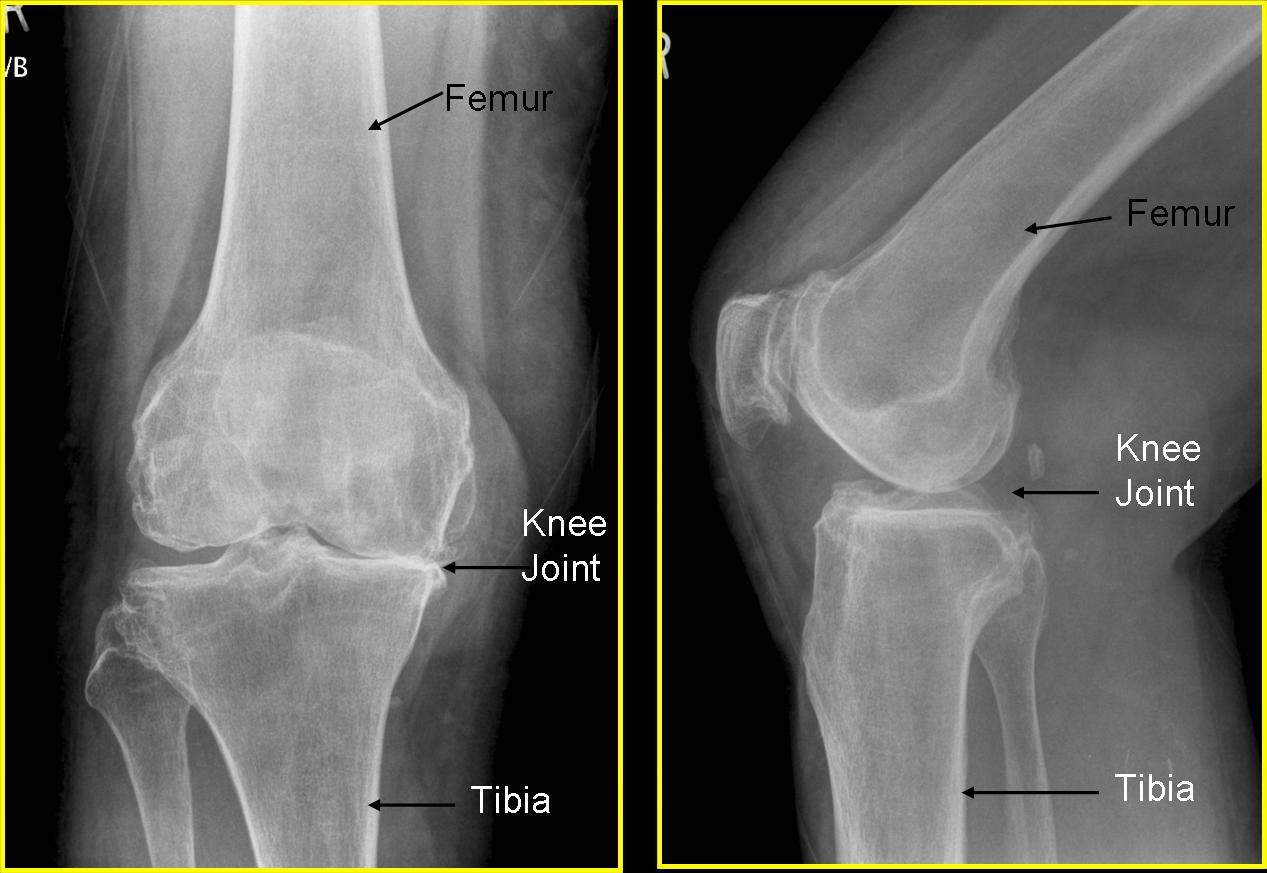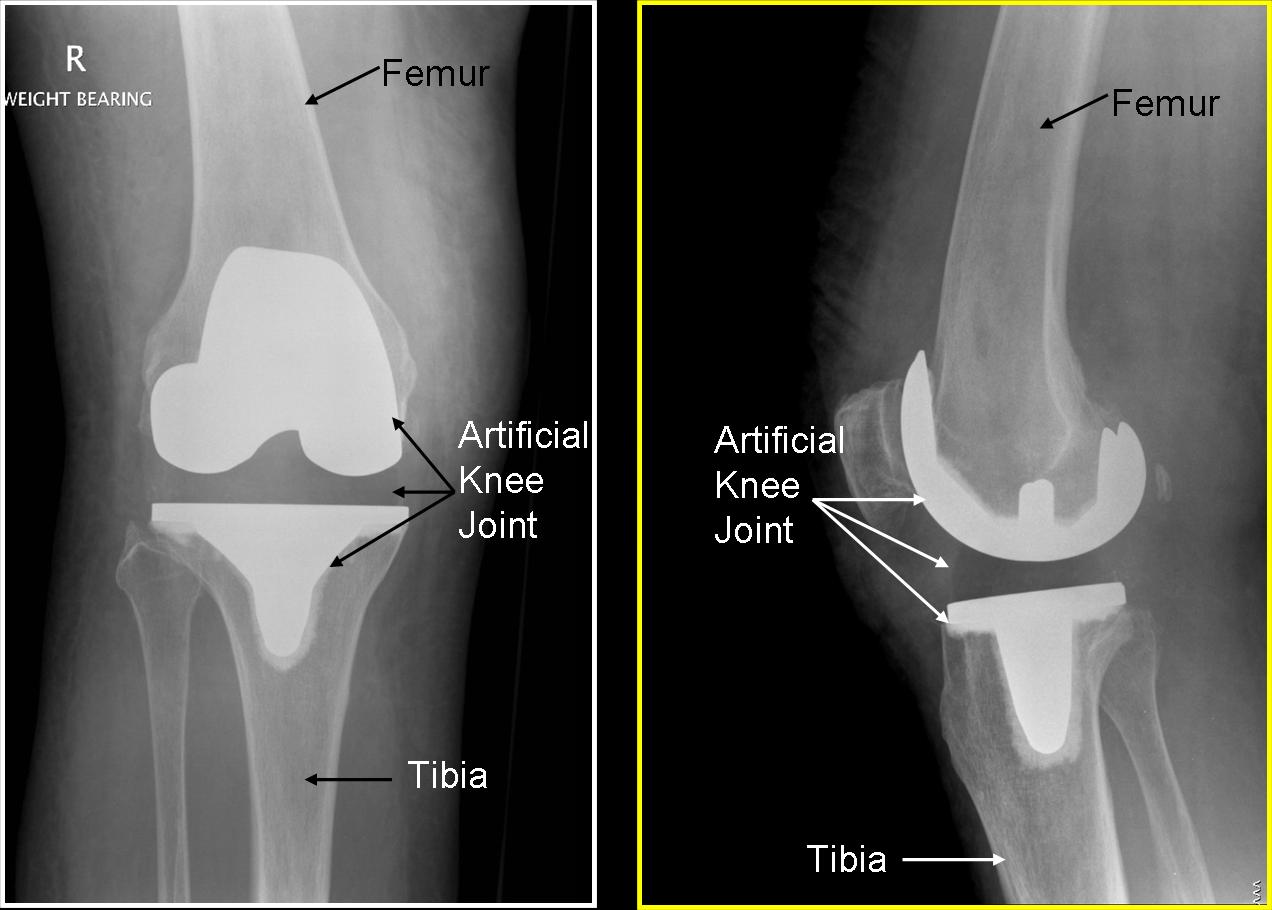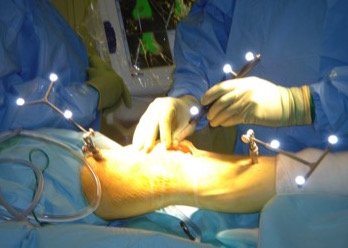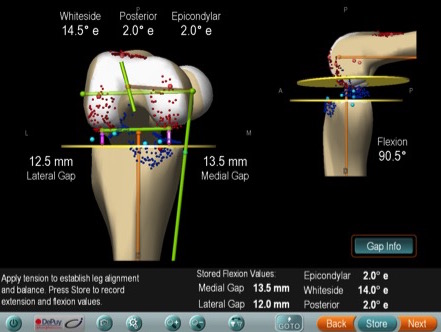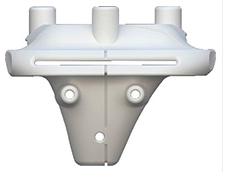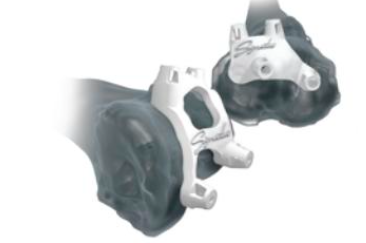Total knee replacement is one of the most successful treatment
interventions in modern medical practice. In this operation, the
surface of the knee joint is replaced with metal components and a
polyethylene insert is interposed, which together form the
artificial joint.
A large number of people have knee replacements and this page is
intended to help the reader understand knee replacement operations,
their advantages and disadvantages, and the
limitations.
Arthritis of the
knee
The knee joint is a highly complex joint formed
between the lower end of the thigh bone (femur) and the top end of
the leg bone (tibia). The knee cap (patella) is located in front of
the knee and articulates with the femur.
The surface of femur and tibia, which form the knee joint, are
lined with a smooth surface called the articular cartilage.
Additionally, the knee has two crescent shaped cartilages called
the menisci which are located between the femur and tibia and act
as shock absorbers. There are four main ligaments in the knee – two
cruciate and two collateral ligaments, which provide stability to
the knee.
In arthritis, the articular cartilage becomes thin and wears out.
This leads to knee stiffness, deformity and pain. Various
conditions can affect the integrity of the articular cartilage.
Most commonly, it is osteoarthritis (also called as
osteoarthrosis), and other conditions include rheumatoid arthritis,
arthritis following injury to the knee, and rarely tumours, rare
inflammatory arthropathies, and infections.
Knee replacement is carried out to relieve pain from the degenerate
joint.

